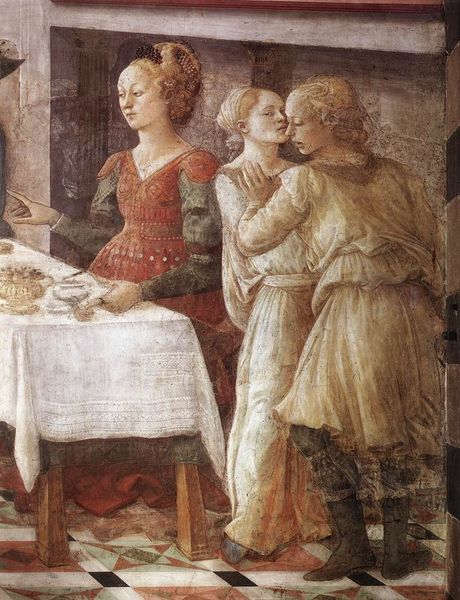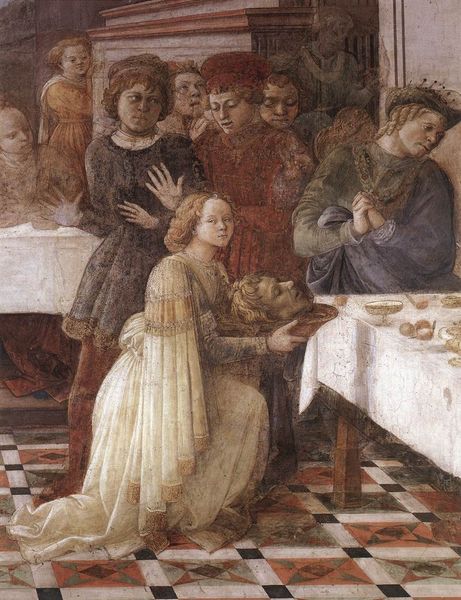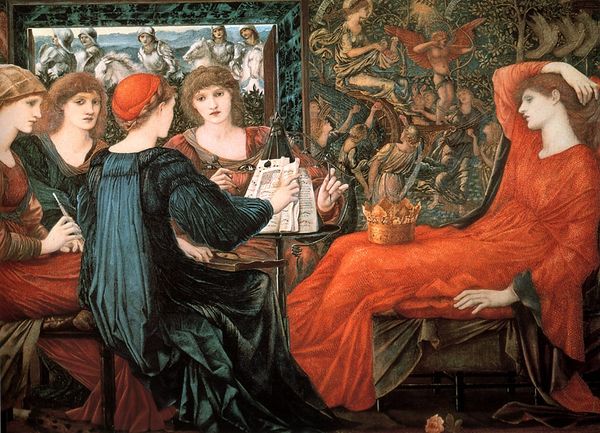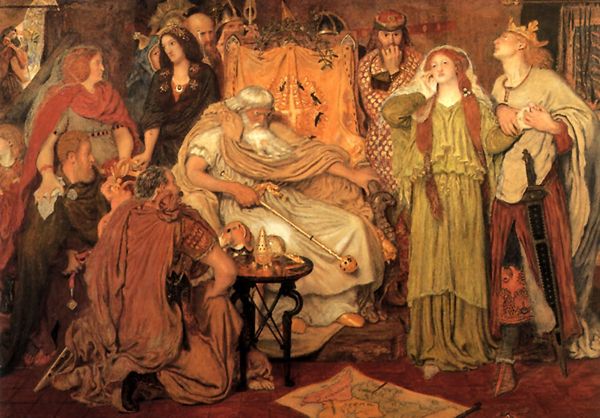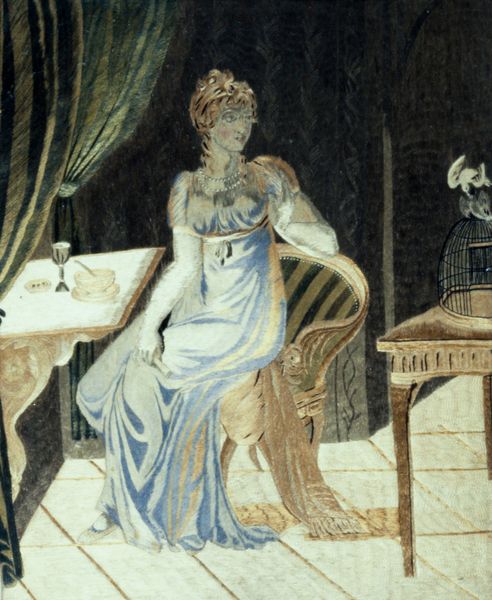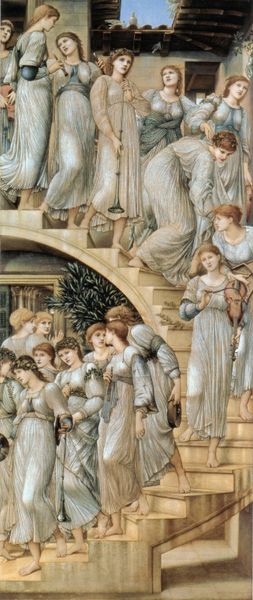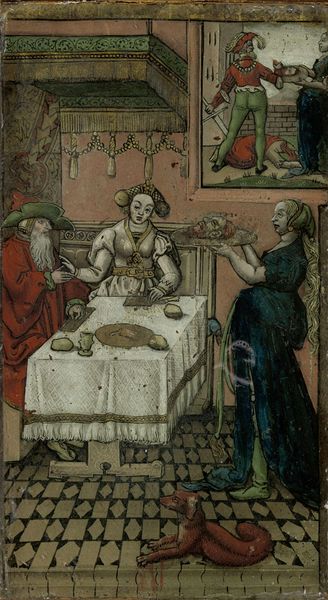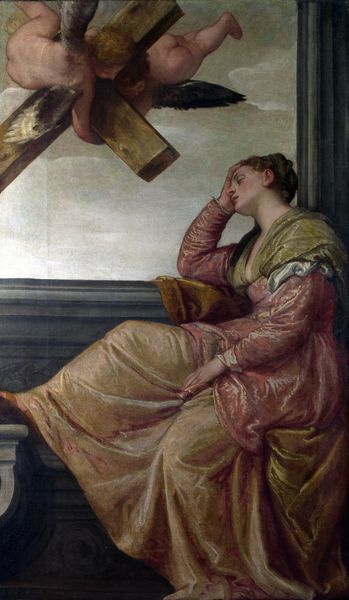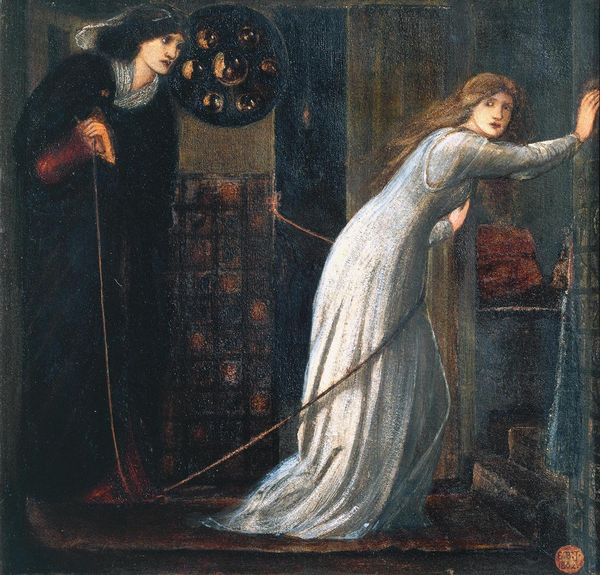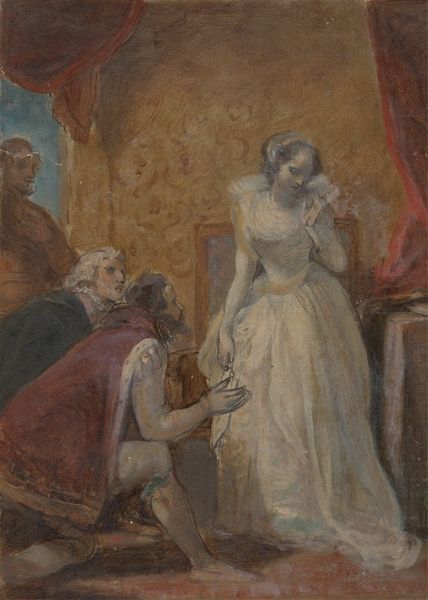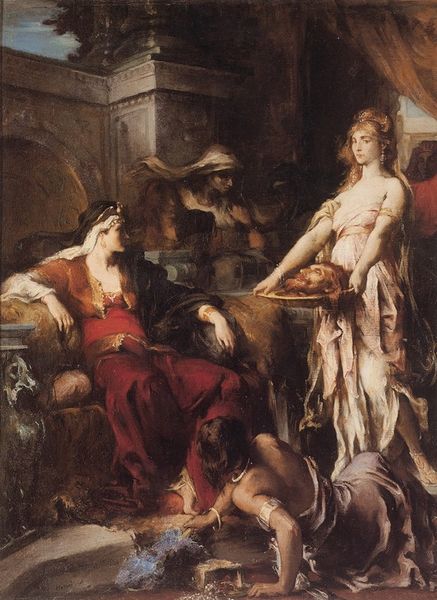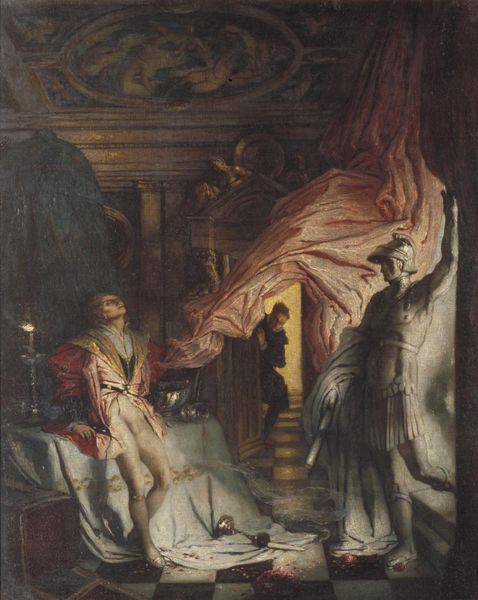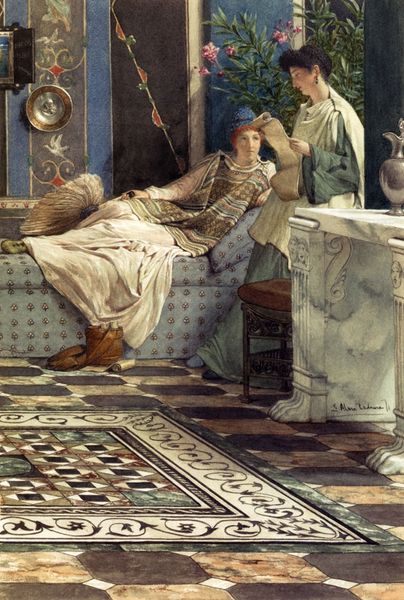
painting, oil-paint, fresco
#
portrait
#
narrative-art
#
painting
#
oil-paint
#
figuration
#
fresco
#
oil painting
#
christianity
#
painting painterly
#
genre-painting
#
history-painting
#
italian-renaissance
Copyright: Public domain
Here we see a detail of Filippo Lippi’s fresco, made around 1452 in Prato, Italy. As a fresco, this image was made by applying pigment to wet plaster. The whiteness of the plaster provides the perfect ground for the scene, creating a sense of light that radiates from within. This material basis is also critical to understanding the social context of the work. Lippi would have worked quickly, and in sections, and would have needed assistants to prepare the plaster. You can see the lines where the artist stopped work for the day - the joins between one patch of fresco and the next. The architecture of the scene, the floor tiles, the garments and headdresses – all of these required a mastery of perspective, geometry, and of course, the mixing of pigments themselves. Each stage of the process, from quarrying the lime for the plaster to the grinding of the pigment, involved the expertise and labor of skilled workers. Looking closely at the way the paint has been applied to the surface, we gain insight into the artist’s creative process and the collective effort required to produce such a monumental work. We begin to understand the value and relevance of the craft.
Comments
No comments
Be the first to comment and join the conversation on the ultimate creative platform.
